Chapter 1-5
Learning Mathematics And Science Through Skills And Reasoning
1.1 Skill-1 Counting and Grouping
1.2 Skill-2 Make a diagram or make visual representation using Models
1.3 Skill-3 Make a List or Table or Chart or Graph
Reasoning : Pattern
2.1 Meaning of Reasoning
2.2 Concept of joyful learning
2.3 Type of Pattern
2.4 Identifying Patterns in your world
2.5 Play with Patterns: uses of Pattern in Math
2.6 Secret Messages
2.7 Practice Exercise- A and B:
Number Systems And Place Value
3.1 Why do we need number?
3.2 The Evolution of Numbers: Number System
3.3 Types of Numbers
3.4 Whole Numbers
3.5 What is Number Line?
3.6 What is Skip Counting?
3.7 Successor and Predecessor of Whole Number
3.8 Place Value
3.9 Pattern in Place Value: Rule
3.10 How to compare Numbers?
3.11 Formation of Numbers: Introducing 10,000
3.12 Practice Exercise- A to I: Practice Exercise- J: Navodya Vidyalay Entrance Questions
Roman Numerals
4.1 Practice Exercise- A:
Operation On Whole Numbers
5.1 The importance of the Equal Sign
5.2 What is Arithmetic?
5.3 Addition: Definition
5.4 Method of Addition
5.5 Properties of Addition
5.6 Types of Number Sentences or Equations
5.7 Practice Exercise- A:
Chapter 6-10
Subtraction
6.1 Subtraction: Definition
6.2 Method of Subtraction
6.3 Practice Exercise- A:
Multiplication
7.1 Multiplication: Definition
7.2 Multiplication using Number Line
7.3 Method of Multiplication: Long Multiplication
7.4 Properties of Multiplication
7.5 Multiplication Table: Multiples of a number: Pattern and Multiples
7.6 Practice Exercise- A:
Division
8.1 Division: Definition
8.2 Connection/Relation between Division and Multiplication
8.3 Method of Division
8.4 What is a Fact Family?
8.5 Inverse Operations
8.6 Practice Exercise- A and B: Practice Exercise- C: Navodya Vidyalay Entrance Questions
Factors And Multiples: LCM And HCF
9.1 Definitions
9.2 Definition of Factor
9.3 Properties of Factors
9.4 How to find factor of a Number?
9.5 Prime and Composite Number
9.6 Prime Factor and Prime Factorization
9.7 Common Factor: Common Multiple
9.8 Highest Common Factor: HCF or GCF
9.9 Lowest Common Multiple
9.10 Practice Exercise- A and B: Practice Exercise- C: Navodya Vidyalay Entrance Questions
Test Of Divisibility
10.1 Definition
10.2 Pattern in Divisibility Rules: Rules for Divisibility of numbers
10.3 Unit Digit of a number
10.4 Practice Exercise- A: Practice Exercise- B: Navodya Vidyalay Entrance Questions
Chapter 11-15
Unitary Method
11.1 Definition
11.2 Uses of Unitary Method
11.3 Practice Exercise- A:
Fraction
12.1 Definition
12.2 Meaning of Whole: A Fraction is associated with a Whole
12.3 Writing Fraction in words
12.4 Why do we need Fractions in our daily life?
12.5 Fractions on a Number Line
12.6 Types of Fractions
12.7 Simplifying Mixed Numbers
12.8 Simplest form of Fraction
12.9 Equivalent Fractions
12.10 Like and Unlike Fractions
12.11 Properties of Addition and Subtraction of Fractional Numbers
12.12 Practice Exercise- A: Practice Exercise- B: Navodya Vidyalay Entrance Questions
Decimal
13.1 Why do we need for Decimals?
13.2 What are Decimal Numbers?
13.3 What is Decimal Point?
13.4 Difference between Fraction and Decimal
13.5 Reading and Writing Decimal Fractions
13.6 Equivalent Decimals
13.7 Like and Unlike Decimals
13.8 Comparing and Ordering Decimal Fractions
13.9 Addition and Subtraction of Decimals
13.10 Practice Exercise- A:
Measurement
14.1 Measurement: Definition
14.2 Length
14.3 Practice Exercise:
14.4 Weight: Practice Exercise:
14.5 Measurement of Capacity (Volume)
14.6 Measurement of Time
14.7 Practice Exercise- A: Practice Exercise- B: Navodya Vidyalay Entrance Questions
14.8 Money: Indian Currency
14.9 Practice Exercise :
Geometry
15.1 What is Geometry?
15.2 Uses of Geometry in daily life: Why we need Geometry?
15.3 What are Dimensions?
15.4 Basic Geometry terms
15.5 Type of Lines
15.6 Polygon
15.7 Circle
15.8 Tangrams for kids
15.9 Tessellation
15.10 Practice Exercise:
Chapter 16-18
Perimeter And Area
16.1 Perimeter
16.2 Perimeter of a Rectangle
16.3 Perimeter of Regular Shapes
16.4 Area
16.5 Finding area by counting Squares: Finding area of irregular figures
16.6 Practice Exercise- A: Practice Exercise- B: Navodya Vidyalay Entrance Questions
Symmetry
17.1 Introduction
17.2 Line Symmetry
17.3 Applications of Symmetry
17.4 Finding Lines of Symmetry: The Perpendicular Bisector
17.5 Symmetrical Figures
17.6 Practice Exercise- A:
Data Handling
18.1 Introduction: Getting smart with Charts
18.2 How do people make decisions? Uses of Statistics in daily life
18.3 Collection and Recording of Data
18.4 Organization of Data
18.5 Presentation and Interpretation of Data
18.6 Pictographs
18.7 Reading a Bar Graph: Interpretation of the Bar Graph
18.8 Practice Exercise- A and B:

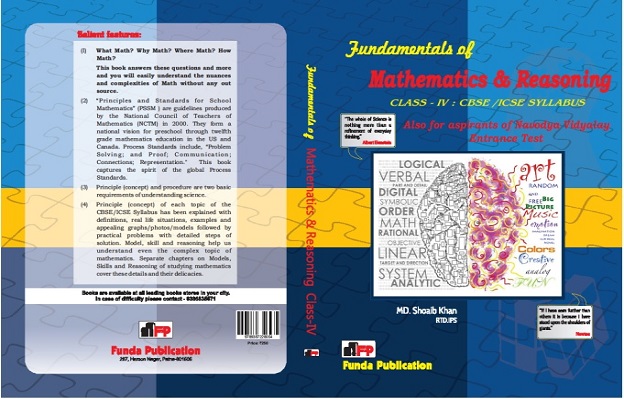
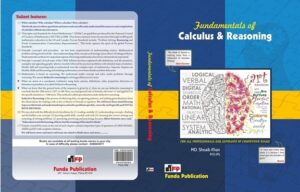
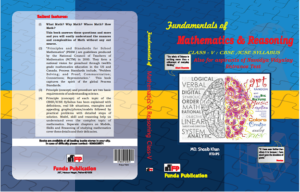
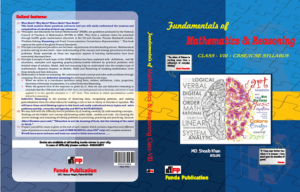
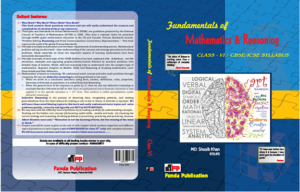
Reviews
There are no reviews yet.